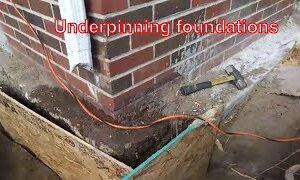Concrete slab floors can be completed using various materials that offer style and durability. Some flooring types work better on slabs prone to moisture than others.
Insulation should be used under floor slabs in structures heated by electricity to prevent frost movement and insulate the ground beneath the slab. It also acts to prevent frost damage.
Durability
Concrete house slabs Melbourne is durable and long-lasting, which makes it the perfect material for floor slabs. When combined with steel reinforcements – or reinforced concrete – this durable mix can become even stronger and longer-lived.
Crushing concrete is harder than pulling it apart, yet tension weakens its strength over time, so reinforcing reinforcements are necessary in order to avoid cracks from appearing due to changes in moisture or temperature levels. This prevents ugly cracks forming that could otherwise occur from stress fractures in a slab surface.
To reduce moisture intrusion, a vapor barrier should be installed under a slab. An adhered coating such as epoxy or vinyl may require it. Furthermore, insulation of heated slabs may help save on energy bills; usually consisting of both XPS and EPS rigid board insulation which should be taped at all penetrations for an adequate seal.
Energy Efficiency
Floor slabs can become more energy efficient by installing a concrete vapor barrier, especially for homes featuring in-floor radiant heating systems; it will prevent heat loss through exposed slab edges.
Concrete floors make an excellent thermal mass. They absorb and store heat during the day before slowly releasing it at night to help balance temperature fluctuations throughout the house, which is even more effective if insulation and external walls made of concrete are also employed.
In winter months, concrete slab-on-ground floors act as heat sinks that take advantage of the earth’s relatively consistent low temperature to help regulate indoor temperatures. Utilizing a concrete vapor barrier may further contribute to this benefit, although its inclusion isn’t necessary if your floor slab will be covered by non-adhered flooring material such as carpeting; it becomes necessary when used under epoxy coating; 15 mil poly vapor barriers would likely provide more reliable protection during construction activities and aging than their 6 or 10 mil counterparts that tend to be more widely used by most contractors and homeowners.
Maintenance
Concrete floor slabs are durable and low-maintenance options that provide fire resistance and acoustic benefits, and can be customized with various flooring options to add character and beauty to interior spaces. However, they cannot protect against moisture damage.
Moisture and vapor migration from the soil into a concrete slab can lead to cracking if it is not adequately protected by insulation, frost depth protection and expansion material. Insulation under or around a slab as well as expansion material will reduce this effect and keep cracking to a minimum.
Mats and rugs placed near entrances will help to prevent dirt from being tracked onto concrete slabs, saving on cleaning costs as well as prolonging its lifespan. This will lower maintenance expenses.
Sunken slabs (also referred to as sunk slabs) are commonly constructed below washrooms, kitchens and laundry areas in order to conceal sewerage pipes. When done so, special care must be taken so as not to expose plumbing penetrations and expose them to pressure from rising water tables; this can be achieved by leaving at least 100mm of slab edge exposed as well as installing physical barriers such as termiticide-impregnated polyethylene vapour barriers, stainless steel mesh or graded stone sheets as physical barriers.
Aesthetics
Concrete slab floors can be left with a natural look or stained to enhance their aesthetic appeal. Stains can be applied directly on plain or finished concrete, providing nearly endless hue options ranging from light greys and earthy browns all the way through deeper tones.
Concrete floors pair well with various design styles, from modern minimalist to rustic and earthy. However, they may be less suitable for classic vintage home styles.
Brushing and burnishing concrete floors creates a lustrous finish without trowelling marks, lending the surface an inviting look that can range from Tuscan to Old World and organic. Before staining an entire room with it, it is recommended to conduct an informal test in an inconspicuous spot, as variations in concrete mean no two slabs will look exactly the same shade of stain; the results often make your floor truly unique!
